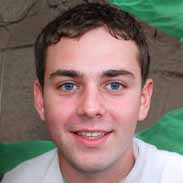Sliding Filament Theory Steps – Flashcards
Unlock all answers in this set
Unlock answersquestion
Sliding filament theory for the contraction of skeletal and cardiac muscle
answer
(tropomyosin, troponin, myosin binding site, Ca++ channel, Ca++ active transport pumps, ATP, acetylcholine, acetylcholinesterase,
question
Sliding Filament theory Step 1
answer
Action potential (electrical stimulation) from Somatic (motor) nerve, stimulates skeletal muscle fibers (cells) at neuromuscular junction (latent period)
question
Sliding Filament theory Step 2
answer
Action potential causes the opening of potassium (Na+) channels on the sarcolemma thus causing a wave of depolarization to travel from the neuromuscular junction (latent period)
question
Sliding Filament theory Step 2
answer
Action potential causes the opening of potassium (Na+) channels on the sarcolemma thus causing a wave of depolarization to travel from the neuromuscular junction (latent period)
question
Sliding Filament theory Step 3
answer
depolarization event is communicated deep into the sarcoplasm via t-tubules (latent period)
question
Sliding Filament theory Step 4
answer
depolarization of sarcoplasmic reticulum causes the opening of calcium channels and the subsequent release of calcium from sarcoplasmic reticulum (contraction period)
question
Sliding Filament theory Step 5
answer
Calcium binds to troponin, troponin molecules change shape causing tropomyosin, to move off of crossbridge binding sites on actin. (contraction period)
question
Sliding Filament theory Step 6
answer
Myosin crossbridges bind to crossbridge binding sites on actin (contraction period)
question
Sliding Filament theory Step 7
answer
ATPase acts on ATP in the binding site on the myosin to convert it into ADP+ Pi+ Energy (contraction period)
question
Sliding Filament theory Step 8
answer
Released kinetic energy causes a "power-stroke which causes actin to slide over myosin (contraction occurs) (contraction period)
question
Sliding Filament theory Step 9
answer
Sarcolemma repolarizes due to the opening of potassium channels (relaxation period)
question
Sliding Filament theory Step 10
answer
Calcium channels close and an active transport pump carries calcium back to sarcoplamic retculum, troponin returns to pre-calcium shape, and ATP reforms to release the actin-myosin bond. (relaxation period)
question
Sliding Filament theory Step 10
answer
Calcium channels close and an active transport pump carries calcium back to sarcoplamic retculum, troponin returns to pre-calcium shape, and ATP reforms to release the actin-myosin bond. (relaxation period)
question
Sliding Filament theory Step 10
answer
Calcium channels close and an active transport pump carries calcium back to sarcoplamic retculum, troponin returns to pre-calcium shape, and ATP reforms to release the actin-myosin bond. (relaxation period)



